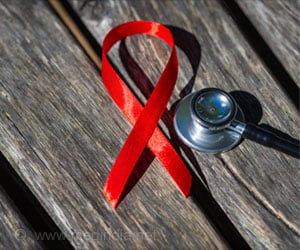Scripps Research Institute scientists have come up with a novel two-punch strategy to combat HIV at the earliest stage of infection.
Scripps Research Institute scientists have come up with a novel two-punch strategy to combat HIV at the earliest stage of infection.
This unique process is based on latest viral discoveries and scientists have already successfully tested aspects of it in the laboratory. According to the authors of the study, this discovery may reinstate attempts for developing a preventive/therapeutic vaccine against HIV.More than a dozen candidate vaccines, which have tried to raise immunity against the spiky proteins on the viral envelope, have not succeeded in clinical testing, till date.
The team of researchers led by Chi-Huey Wong, Scripps Research Chemistry Professor, have created devices known as glycodendrons, designed to do two things at once: inhibit the transport of HIV from where it traditionally enters the body, preventing it from moving deeper inside where it can infect immune cells; and set up an immune antibody response to a unique carbohydrate structure on the surface of the virus.
“This paper is about a new direction in HIV vaccine design. Results we have so far are very promising,” said Wong.
He said that till date, the devices have been able to stimulate the immune system of mice to induce antibodies against HIV surface glycoprotein, and, in laboratory studies, have been able to block the virus from infecting immune cells.
The new strategy is based on two recent findings in the field of HIV research: First is the discovery that HIV takes a Trojan horse approach to reach cells it needs to infect deep inside the human body.
The second discovery is that there’s an antibody that is able to signal immune destruction of the virus. On of the study’s first author, Sheng-Kai Wang, a graduate student in Wong’s laboratory has said that this antibody, 2G12, protects people who have it against HIV progression, but there are very few of those who are infected put up such an immune reaction.
Previously, the researchers designed and tested synthetic constructs to mimic the clusters of sugars recognized by 2G12 that could form a vaccine. They invented a process called programmable one-pot synthesis that made it possible for them to quickly assemble many types of carbohydrate structures by placing a large number of chemical building blocks into a reaction vessel to make sequential chemical reactions.
Thus, the Scripps Research team built a dendron structure that can bind to the DC-SIGN protein, preventing HIV from doing so, and which also mimics the sugar clusters that 2G12 binds to, prompting the immune system to produce destructive antibodies to the viral coat.
“The sugar structure is able to inhibit HIV from binding to DC-SIGN on dendritic cells in vitro. But to become a vaccine, as tested in mice, the sugar structure has to be attached to a carrier as the sugar structure alone is too small and too weak to be used as a vaccine. The sugar-carrier conjugate will also inhibit HIV from binding to DC-SIGN," said Wong.
The study is published in a recent issue of the online Early Edition of the Proceedings of the National Academy of Sciences (PNAS).
Source-ANI
SRM/K
 MEDINDIA
MEDINDIA
 Email
Email









